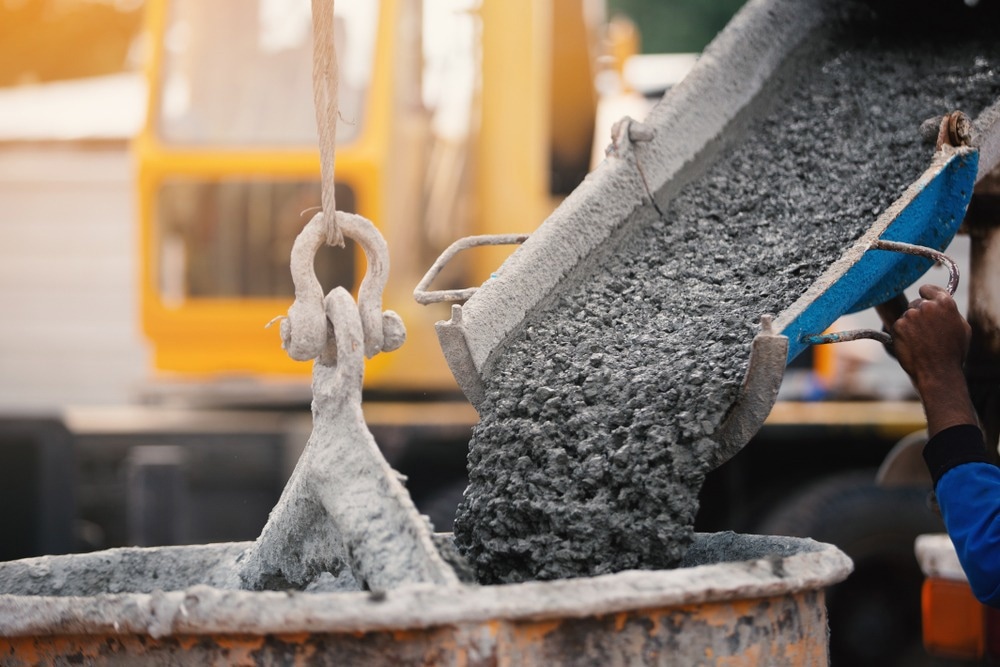Self-compacting concrete is a recently developed green building material. However, like all materials, there is room for improving its eco-efficiency. To explore how this may be possible, a new paper has been published in the journal Construction & Building Materials.

Study: On the strategies to improve the eco-efficiency of self-compacting concrete using industrial waste: An analytical review. Image Credit: P.KASIPAT/Shutterstock.com
Self-Compacting Concrete
In recent years, there has been a growing drive in materials research to manufacture advanced construction materials and address the key issues facing the world’s rapidly growing and urbanizing population. A critical challenge is reducing the time and workforce requirements in building projects to construct high-quality and durable concrete structures with superior strength.
Self-compacting concrete has been proposed as a solution for this issue due to its favorable characteristics such as high fluidity, workability, and cohesion, as well as the ability to self-compact without using equipment such as vibrators. This innovative building material is suitable for reinforced concrete structures such as large buildings and infrastructure such as bridges and tunnels.
In order to stabilize this material and promote characteristics such as self-compacting and fluidity, copious amounts of fine materials are needed in its formulation. This, unfortunately, has the effect of increasing cement consumption, which presents environmental and cost concerns for construction projects.
Improving the Green Credentials of Self-compacting Concrete
Improving the green credentials and eco-friendliness of self-compacting concrete is essential to help construction projects which utilize this material meet their net zero carbon targets. Overall, cement production is responsible for around 5-7% of total global carbon emissions, meaning that it has a massive impact on climate change.
To reduce the environmental impact of the cement industry, several strategies have been proposed that use more efficient dosage methods and industrial waste streams as aggregates and fillers in concrete.
Fly ash, sugarcane bagasse, steel slag, and rice husk ash have been evaluated as partial replacements for conventional cement in concrete in recent years, with promising results. They can improve mechanical properties such as strength, promote pozzolanic properties, and importantly the use of these materials has no discernible negative effect on the hardened characteristics of the final product.
A key benefit to using ashes in self-compacting concrete is that they function as viscosity modifiers. This increases segregation resistance, although spreading tends to be reduced by the addition of these waste materials.
Inert waste materials such as limestone, stone dust, and ornamental stone waste have been evaluated for their use as fillers in self-compacting concrete. They have also been used as aggregates. These materials provide benefits such as stabilization and reduced hydration heat. However, they can influence workability due to their irregularity.
Several studies have been published in recent years to improve the eco-friendliness of self-compacting concrete. Several authors have proposed different residues and self-compacting concrete mixtures, with focus placed on optimizing the formulation of admixtures. However, there has been a lack of research on using sustainability indicators to demonstrate the effectiveness of improvements.
The Study
In order to evaluate the eco-friendliness of self-compacting concrete and provide recommendations for improving this critical factor, the review paper has investigated the current research and strategies in this field. Focus has been placed on different dosage techniques and residues. Sustainability indicators and eco-efficiency assessments have been employed by the authors to evaluate the efficiency of current strategies.
A thorough literature review was performed by the authors to compare current state-of-the-art approaches for manufacturing self-compacting concrete. One hundred and thirty-eight papers were analyzed. Several of these studies proposed the use of waste residues such as ground granulated blast furnace slag, recycled concrete aggregates, fly ash, and sugarcane bagasse.
It has been noted by the authors that, despite superplasticizing admixtures being consumed less than other materials in concrete construction, they still possess significant environmental impacts, which affect the production of environmentally friendly self-compacting concrete. Additionally, when comparing concretes, mechanical strength is a key factor.
Eco-efficiency analysis revealed that particle packing methods produce mixtures with increased performance overall. The incorporation of waste residues improves the environmental friendliness of self-compacting concrete compared to reference mixes.
There are three ways to improve the performance of self-compacting concrete and enhance its eco-friendliness. Firstly, incorporating waste residues decreases resource exploitation and emissions associated with concrete production. Secondly, cement consumption can be reduced using these green strategies. Finally, efficient dosage design and the use of sustainable workability-promoting materials can improve mixture performance without the need for chemical admixtures.
In summary, this paper has provided a timely and thorough analytical review of current perspectives on improving the eco-friendliness and performance of self-compacting concrete mixtures. This field of materials research possesses considerable potential for the implementation of more sustainable construction processes. Whilst challenges still exist with this material, it has vast potential.
Further Reading
De Souza, A. M., et al. (2022) On the strategies to improve the eco-efficiency of self-compacting concrete using industrial waste: An analytical review Construction & Building Materials, 347, p. 128634 [online] sciencedirect.com. Available at: https://www.sciencedirect.com/science/article/abs/pii/S0950061822022917?via%3Dihub
Disclaimer: The views expressed here are those of the author expressed in their private capacity and do not necessarily represent the views of AZoM.com Limited T/A AZoNetwork the owner and operator of this website. This disclaimer forms part of the Terms and conditions of use of this website.